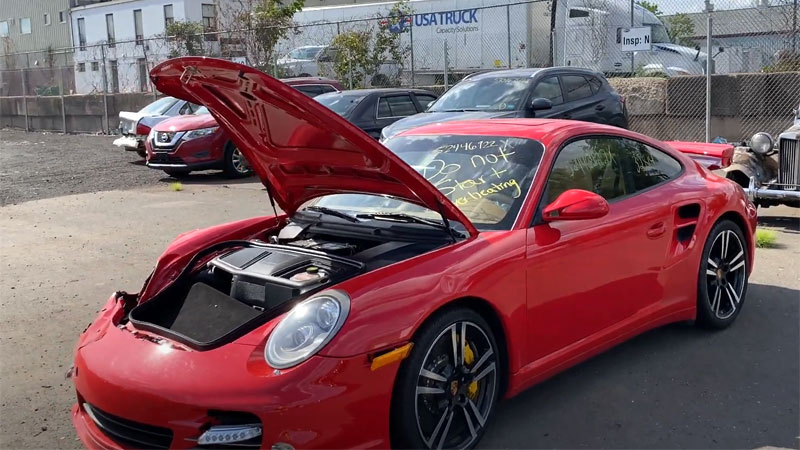If you need to save money on a used vehicle, buying a car at an auto auction is one option. Such auctions are held across the country and usually include dozens to hundreds of used vehicles.
Here’s how to navigate the auctioning process and avoid getting stuck with a jalopy.
Choose Your Auction Type
There are a variety of auctions out there, ranging from the exclusive, such as Barrett-Jackson, to the everyday government or public auction. We won’t examine high-end auctions since the type of car the majority people choose and can afford are found in government and public auctions.
A government auction is comprised primarily of fleet vehicles used by police departments and other government departments and agencies. Typically, a police department will swap out its inventory of aging Dodge Charger sedans and Ford Police Interceptors every five or six years, and replace them with the newest line of pursuit vehicles.
Those well-driven police cars may be joined by other mainstream models such as the Dodge Avenger, Ford Fusion, or Chevrolet Malibu and the occasional exotic car netted in a drug operation, such as a late-model Maserati Quattroporte S Q4 or a Porsche 911 Carrera.
Nearly all government auctions, however, offer vehicles as is — you won’t even have an opportunity to drive them.

Public Auction
A public auction is comprised of non-government fleet models or any kind of car, truck, minivan, SUV, or other passenger models that were traded in by customers or repossessed by the banks. Typically, you will find vehicles that wholesalers do not choose, but that means these models may not be in fantastic shape.
Here, you need to possess a mechanic’s eye and be ready to fix whatever problems arise. Just like government auctions, you usually won’t have the chance to drive a public auction car unless you arrive hours before the start of the auction.
In any case, a keen eye can help you avoid models that have been in an accident or damaged by flood. Fixing such cars and retitling them in another state is one way that public auctions can be abused.
Bid With Knowledge
Government and public auctions may have a few jewels in the mix, but only if you carefully examine every model that interests you. Keep in mind the following five points:
1. Stick to a budget.
You can become carried away at an auction, especially if you find a car you desire. That vehicle may interest several other bidders, so know how much you are willing to spend and stick to that limit.
If you are carried away in the bidding process, that one-time solid deal may be no bargain at all. Generally, auctions accept a variety of payment methods, including cash, credit card, and personal checks.
2. Understand car values.
You should know a car’s value before it is auctioned. Obtain the list of auctioned cars, and figure out how much you should pay. Further, stay under the estimated price and you will find a bargain, minus whatever repairs you must do.
3. Verify the vehicle identification number (VIN).
Every vehicle at auction will have a VIN, which is typically affixed to the dashboard on the driver’s side and at the base of the windshield. VINs can be found elsewhere too, including on the engine, the trunk lid, and the doors.
Notably, the numbers should match. If they do not, the car may have been reconstructed following an accident.
4. Know your risk tolerance.
Before attending an auction you should understand your mechanical abilities, including how likely you would handle potential problems. If you are handy and enjoy tinkering with cars, then an auto auction could be right for you.
However, if you are looking for a fleet bargain for your newest family driver and have little inclination to do repairs, then the auctioned vehicle bargain may turn into a money pit.
5. Inspect it like a mechanic.
You may not be able to drive a car at auction, but you should perform a vehicle inspection just like you would on any other vehicle that interests you.
- Examine the body and find doors that are evenly fit, bumpers that match, and trunks that shut.
- Lift the hood and search for telltale signs of water damage, such as staining around the engine firewall.
- Check all fluids and if there is a burnt smell when pulling either the engine or the transmission dipsticks, these signs could point to deeper problems.
- Inside, examine the carpeting to find out if it matches — replacement carpeting may hide water damage.
- Next, examine all lights, the audio system, navigation, and other electronic parts for functionality.
- Lastly, inspect the brakes, tires, suspension system, and countless other parts to gauge wear and tear.
Use all your senses, except for taste, to evaluate the car — if you are still interested, then obtain a vehicle history report utilizing your smartphone to find whatever else you can about a particular vehicle.
Auto Auction Considerations
If you have never been to an auto auction before, then your first visit should be an observation-only learning experience to gauge how they work. In future auctions, consider bringing along a mechanically knowledgeable friend to serve as a second set of eyes.
Also, observe how other participants evaluate cars that interest them.
Finally, if the entire process of an auto auction scares you there is one other type of auction that may be to your liking — bank and credit union auctions.
Auto auctions conducted by financial institutions are usually comprised of repossessed vehicles, off-lease bank cars, and fleet vehicles. Unlike other auctions, you usually can drive them before placing your bid, and you have your purchase financed too.
Photo Attribution
- Image by Venita Oberholster from Pixabay
- Image by mark-az from Pixabay.
See Also – 7 Steps to Acquiring a Used Car
- 2024 Mazda CX-50: A Compact SUV with Premium Aspirations - Apr 15, 2024
- 2024 Ford Mustang (Iconic Pony Car Evolves) - Apr 4, 2024
- 2024 Ford Maverick (Looks Like a Truck, Drives Like a Car) - Mar 28, 2024

